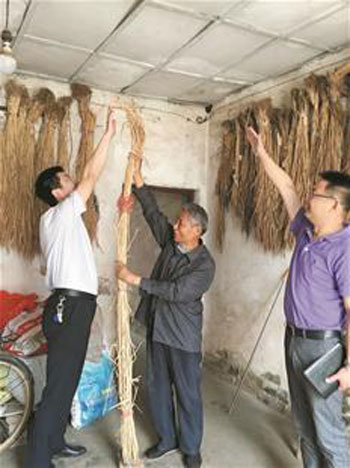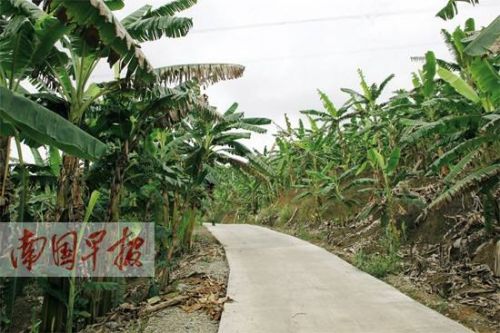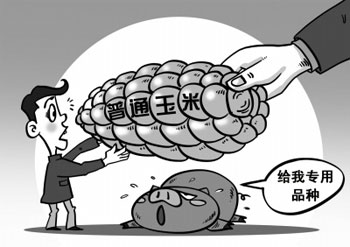Rice grows into Yao Ming, high soil experts ponder strange tricks.
Original title: Xianning soil experts are good at planting rice and rape all their lives (photo)

Rice is a head taller than a man.
One seed at a time.
Keeping watch on the ridges of the fields all his life, Yin Puhe in Henggou Town, Xianning has always insisted on doing experiments in his own fields and has become a well-known soil expert. He has planted rice as tall as Yao Ming, cultivated rape is tall and big, and he always sees the knack of planting problems that even agricultural technicians wonder about.
One seed at a time.
The desk by the window is the brightest place in the room, and the 78-year-old Yinpu River spends the most time except farmland.
At 10:00 on May 18, in Qunli Village, Henggouqiao Town, Xianning City, in a white bungalow next to National Highway 107, Yin Puhe was picking up rapeseed in an iron dustpan at his desk. After looking down at the Chutian Metropolis Daily reporter who entered the door from above his glasses, he nodded his head to say hello, but his men did not stop. As he picked up the rapeseed the size of millet into the paper cup, he counted it in his mouth.
"I was counting to the point just now. If I interrupt, I have to start all over again." After counting, he poured the rapeseed from the paper cup into the nearby tray balance, slowly adjusted the weight, and finally got the weighing result of 6 grams. This is the weight of 1000 rapeseed, commonly known as 1000-seed weight, used to evaluate the quality of seeds. "my rapeseed is bigger and weighs 2 grams more than normal rapeseed." These 2 grams may not be impressive, but the increase in production after planting in a large area is a considerable number.
In order to arrive at this result, the Yinpu River began a simple and boring count at 8 o'clock in the morning.
This is a sample he selected from the rape he planted. He counted several branches first, and then selected more than 30 pods from the branches. Remember how many seeds there are in each pod. The round rapeseed was too small and easy to roll. Wearing a presbyopic glasses, he counted them one by one and had to concentrate. "Science can't be sloppy, all of which will affect the harvest."
His home is like a small agricultural institute: bunches of dry yellow rice ears hang neatly on the beams, each with a label indicating the planting time, stem length, ear length and grains of each ear, and bags of rice seeds are placed in the wooden frame. stacks of neatly placed newspapers and books quickly piled to the ceiling.
"I now subscribe to 30 newspapers and 9 magazines. I spend two or three hours reading newspapers every day." He has been in the habit of subscribing to newspapers for decades, and he spends thousands of yuan on it every year.
Rice as tall as Yao Ming
Growing rice has been rare in one's life.
The Yinpu River took a bunch of horizontal rice specimens from the wall. The rice, which has been withered and yellow, looks ordinary, but standing on the ground with his hands on the ground shows a difference: the 1.6-meter-tall man stretched out his arms and could not reach the tip of the ear. A few people next to him were interested and stood over to compare the height of rice with rice.
Take out the meter to measure, from the root to the top, the length of the whole rice specimen is 2.26 meters. "the same height as Yao Ming." There was a burst of exclamations from the people around. Yin Puhe smiled confidently: "they all grow rice. I dare to compete with teacher Yuan Longping's rice."
This is the rice planted by Lao Yin three years ago.
In 2010, Lao Yin saw a report in the Rural New Daily. The report says that Xinzhou farmer Li Xiangying bred "tall rice" with a plant height of 1.55 meters. Standing in the field, the rice plant was taller than his neck, and the panicle was 28 centimeters long, with about 250 grains per panicle. "at that time, I didn't grow as high as I did." At that time, there was a clear record in Lao Yin's observation notes that he had been cultivating a "super tall and thick new type of rice" in the past two years. In 2009, the rice was 1.7 meters high, with a panicle length of 45 centimeters and about 500 grains per panicle. This report encouraged Lao Yin: this yield is good. Can we grow higher rice under locally grown conditions?
Instead of crossing, he found tall and thick mutants from rice, and then selected taller and thicker ones for trial. In 2012, he finally got a super-tall rice, and the following year he planted more than 100 new types of "super-high rice", which is as tall as Yao Ming.
At that time, standing in this much taller "rice forest", Yin Puhe complained that it was inconvenient to look up and administer medicine, and he was glad that the rice stalk did not suffer too much wind and rain and was able to protect it from growing to ear. "just like ordinary rice fields, nothing special has been added." However, the yield of rice is not high, with panicles only 30 centimeters long and only about 300 grains per panicle.
From a planting point of view, this kind of rice as tall as Yao Ming is not suitable for promotion. "if it is used for sightseeing, it is a piece of scenery. And this pole is so long that backfilling can also save fertilizer. " After Lao Yin left the seed, he did not plant it again the following year, leaving only a pot to make a specimen.
Soil experts specialize in crop disease
Having dealt with the land all his life, Yin Puhe became a land expert.
In 1957, the Yinpu River began to come into contact with scientific farming. He was sent by the brigade cooperative to Xiaogan Agricultural School to study, and came into contact with improved varieties, new fertilizer, field water and fertilizer management and other knowledge. "in an age when grain is the key link, increasing output is an important task." He gradually became infatuated with the cultivation of high-yield rice and went to rice research institutes in 10 provinces and cities, including Hunan and Zhejiang, at his own expense. "there is no disease that Lao Yin can't see." The villagers believe that this old farmer, who has only a primary school education, has seen all kinds of problems in 59 years of planting experience, and can basically see diseases and insect pests at a glance.
Last year, villager Xiong Dafu found that the seedlings in the rice fields withered and fertilization and medicine did not work. The agricultural technicians from the agricultural technical station in the town rushed over to look at the seedlings, ask about the situation, and check the water quality, but they could not find the reason, and the senior agronomist took out the data and compared it with no results. After a few turns along the edge of the field, the Yin-pu River told him to apply some fertilizer and look at it in a few days.
A week later, the seedlings came back to life.
Under the questioning of the Xiong River, the Yin Pu River made it clear. It turned out that when he looked on the ridge of the field, he found that the weeds were wilting, which was the effect after the use of herbicides, but the weeds did not die, indicating that the effect had not been achieved. "Rain Water with herbicide flowed into the field, so the seedlings turned yellow." He recalled the torrential rain a few days ago.
On another occasion, a villager died in a large area of the seedlings in the field, and it was suspected that the nearby farmers had poisoned them. "the dead seedling is in the middle of the field." Yin Puhe ruled out the possibility of poisoning, after all, it is more convenient to poison around the ridges of the fields. Carefully examining the scorched yellow marks on the seedlings, thinking of the lightning and thunder a few days ago, he judged that the cause of death was lightning, avoiding a dispute.
- Prev

Farmers go abroad to steal teachers and return to their hometown to plant Xigong bananas with great success.
Farmers go abroad to steal teachers and return to their hometown to plant Xigong bananas with great success.
- Next

Special corn sells well in general families.
Special corn sells well in general families.
Related
- A course of planting techniques and methods on how to grow carrots
- How to plant the latest tulips?
- Is it better to pick tea in the morning or in the afternoon? When is the best time for tea to be picked? what is the third or fifth tea?
- Launch Yuanxiao Happy combination Haocha + Tea Yuan healthy Taste
- Penghu Tourism "Fireworks 20 Parade with You"
- 2022 West Lake Happiness holds "Digital Revitalization Voucher" and draws iphone13 and laptop.
- Banqiao Fuzhou social houses are designed to change start-up combined with police elimination to create a safe and livable environment
- The convenient measure of "mechanical weeding" in Xinbei has been abused and the Agriculture Bureau has imposed heavy penalties on the illegal land consolidation.
- Changgeng University Joins Hands with Four Memory Factories to Rescue Memory Talent Shortage
- The list of Taiwan's top 100 MVP managers is listed by the Director-General of the Farmers' Association of Sanxia District.

